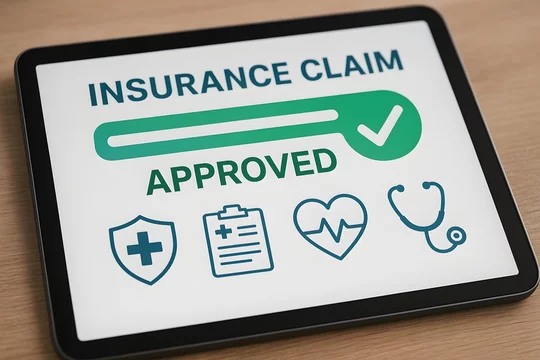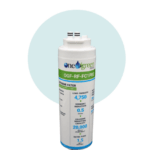Let’s be real. It’s July. Budgets are tight, claim denials are up, and your team is running on caffeine and crossed fingers. If you are reading this now, you are not just “exploring options”—you are probably feeling the pain of manual insurance verification, slow cash flow, or frustrated staff. You want a fix, and you want it before Q4 chaos hits.
But with so many choices, what should you actually look for in medical insurance verification software—especially as a hospital, specialty clinic, ambulatory center, or multi-location group? Let’s cut through the noise.
Why Are You Here—Now?
-
Mid-year is when reality bites.
-
You have seen six months of claim denials stack up.
-
Staff turnover has exposed workflow gaps.
-
The player rules just changed. Again.
-
You have got leftover budget, but only for solutions that deliver fast ROI.
Whether you run a general hospital, ambulatory care practice, or a behavioral health clinic, the need is the same: stop revenue leaks, reduce manual work, and keep patients happy.
That’s only possible with the best medical insurance verification software. In this comprehensive guide, we will explore the concept of medical insurance verification, covering:
-
· The financial and operational impact of verification failures
-
· Rise of medical insurance verification software
-
· Why automation matters more than ever
-
· Essential features to demand from any solution
-
· Questions to ask before a choice
The Financial and Operational Impact of Insurance Verification
|
TL; DR:
What’s Driving the Search for Medical Insurance Verification Software?
Budget left, but not forever? You need a solution that shows ROI before the year ends.
|
|---|
Costly Oversight in Action
Imagine a general/ primary care provider dealing with high patient volumes every day. Staff spend 20 minutes/patient to verify their insurance coverage, and weeks later learn that their policy has lapsed.
Impact? Claim gets denied, patients get frustrated when you hand over the bill, and your practice eats the loss. This is the reality most general/ primary care practices face every day.
Verification Drives Revenue Cycle Health
Let’s take ambulatory care practices—where time is tight and margins are tighter. In this environment, even a small error during insurance verification can lead to claim denials that are costly and time-consuming to fix.
Every missed detail—whether it’s outdated coverage or incomplete patient info—adds up. And resubmitting denied claims? That only results in more staff burnout and revenue leakage.
In fact, studies show that 45% of denied claims stem from inaccurate or missing information. Another report revealed that nearly 50% of practices reported $100 million in unpaid claims over just six months.
That’s not just revenue leakage—it’s a sign that outdated; manual verification processes can’t keep up.
Manual Methods Drain Time & Resources
Manual insurance verification is a time-consuming process—especially in behavioral health practices, where requirements can vary by session type, changing payer’s rule, involve complex pre-authorizations, and demand extra documentation.
It eats up staff time and pulls them away from what matters most: patient care and revenue-generating tasks.
That’s where automation in healthcare comes in. Leverage automation like CERTIFY Health’s medical insurance verification software can streamline even the most complex workflows—whether for primary care, ambulatory services, or behavioral health.
From identifying pre-auth requirements to flagging claim errors and completing verifications accurately, these tools do the heavy lifting.
The result? Your staff stays focused on delivering quality care, while the software handles the time-consuming manual work with precision.
Rise of Medical Insurance Verification Software
Insurance verification used to be a headache. Manual. Slow. Full of back-and-forth and surprises no one wanted.
Not anymore. Digital transformation in healthcare is changing this—insurance verification is getting a serious upgrade. What once took hours now takes seconds. And practices are moving fast: the global insurance eligibility verification market is on track to hit $3.21 billion by 2029, growing at 9.6% CAGR from 2024. This highlights not just growth, but the speed at which the shift from modern to digital is accelerating.
This is especially game-changing for busy practices like primary care, ambulatory, behavioral health, and multispecialty clinics. These settings deal with complex pre-auths, varied payer rules, and tight schedules—there’s no time to chase approvals manually.
That’s where smart tools like CERTIFY Health come in. They connect directly to payer databases, pulling real-time eligibility, co-pays, deductibles, and pre-auth info in seconds. Automation handles the routine, flags what needs attention, and frees your staff to do what they do best: care for patients.
And because it’s integrated with your EHR and practice management system, it eliminates double entry, reduces errors, and keeps your revenue cycle running smooth—and fast.
Why Medical Insurance Verification Software Matters
Medical Insurance Verification Software not only automates repetitive tasks but addresses three critical operational challenges that healthcare organizations face. Learn the importance of insurance verification software discussed in more detail below.
Reduce Claim Denials
For primary care, ambulatory, behavioral, and specialty practices, denied claims aren’t just frustrating—they are expensive, time-sucking roadblocks to cash flow. How to reduce claim denials?
That’s where medical insurance verification software steps in. Think of it as your revenue cycle’s early warning system—flagging inactive policies, missing coverage, or outdated insurance info before the patient ever steps through your door.
According to a study, 82% of claim denials are totally preventable with proper real time eligibility verification.
Automated tools run real-time eligibility checks, so your staff doesn’t have to chase down errors after the fact. Instead of playing cleanup with rework, appeals, or collections, your team stays focused on patient care.
This proactive approach doesn’t just improves claim approval—it transforms your entire revenue cycle strategy.
Boosts Operational Efficiency
If you are still relying on staff to bounce between portals and sit on hold with payers, you are not just wasting time—you are burning out your team and slowing down your practice.
For primary care, ambulatory, behavioral, and specialty providers, medical insurance verification software takes the grind out of daily operations. It automates routine eligibility checks so your staff can shift their focus to what actually matters—patient care, problem-solving, and creating better experiences.
And the ripple effect? Huge.
-
Batch processing automation verifies entire appointment schedules overnight—so your morning starts with zero guesswork.
-
Real-time checks at patient check-in boost operational efficiency and cut delays.
-
No more juggling multiple portals or manually entering the same data twice.
The result is more than just efficiency—it’s a smoother, smarter practice that runs itself in the background while your team delivers real value up front.
Enhances Patient Experience
Surprise bills ruin patient trust. For primary care, ambulatory, behavioral, and specialty practices, insurance verification software is more than a billing tool—it’s a patient experience upgrade.
When patients get clear, accurate cost estimates upfront, they feel more in control. That transparency eases financial anxiety and sets the tone for trust—not tension.
And it’s not just about peace of mind. The medical insurance verification software lets you collect co-pays and deductibles at the time of service, which improves your cash flow and helps avoid those dreaded “surprise” bills later.
The outcome?
-
Fewer billing disputes
-
Higher satisfaction scores
-
Stronger long-term patient relationships
Because when patients understand what they owe before they sit down with a provider, they’re more likely to follow through on care—and come back.
What to look for in Medical Insurance Verification Software 2025
Choosing the right medical insurance verification software requires understanding both current capabilities and future needs.
Here’s The Must-Have Features (No Fluff, Just What Matters)

1. Real Time Eligibility Verification
Most important feature that best platforms not only claim but delivers is instant coverage checks—including benefits, co-pays, deductibles, and plan limits—right at the point of care.
Whether it’s a routine visit or a complex case with multiple policies, real-time data ensures accuracy and confidence in every interaction.
Bonus: The top tools verify 24/7—even after hours and weekends, so your front desk is never left in the dark.
2. Integration Capabilities
Disconnected software kills productivity.
Your medical insurance verification software should sync effortlessly with your EHR, practice management system, and billing software. No double entry. No more “copy-paste” errors.
Look for platforms that support HL7, FHIR, and REST APIs, so your systems work together now—and stay compatible as you grow.
Bonus: Ask vendors “Will this sync with Epic, Cerner, Athena, or our custom system? Is there an API?”
3. Leverage Automation & Batch Processing
You want to verify tomorrow’s schedule in one click, not 200.
Modern systems comes with batch processing automation capabilities that can verify hundreds of patients in a single batch—overnight, if needed. Best for primary care, ambulatory, or behavioral health practices, where patient volumes are high.
The medical insurance verification software you choose should be able to flag expired policies, missing info, or pre-auth requirements, so your team focuses only on what needs attention.
4. Comprehensive Coverage Details
Ask vendor “Does it show full benefit details, not just yes/no eligibility?” Eligibility isn’t just active vs inactive anymore.
You need deep coverage insights—specialist visits, mental health services, therapy caps, Rx benefits, and more.
The right system handles Medicare, Medicaid, commercial, and employer-sponsored plans with equal precision—and stays updated as payer rules change.
5. Robust Reporting and Analytics Tools
“Can we track how many claims are denied due to eligibility? Can I see which payers cause the most trouble?”
Medical insurance verification software that you choose must offer powerful dashboards and customizable reports to reveal real-time success rates, payer issues, staff performance, and denial trends.
Medical insurance verification software that you choose must offer powerful dashboards and customizable reports to reveal real-time success rates, payer issues, staff performance, and denial trends.
Look for systems with predictive modeling that flags future risks—before they hit your revenue.
6. User-Friendly Interface
“Is it easy for new staff to learn? Can we customize views for different roles?”
If your team can’t use it, it doesn’t work. Real time eligibility verification tools you choose should be designed for busy staff—with intuitive layouts, color-coded alerts, mobile access, and minimal clicks – making it easy to learn and use them.
Check if it is quick to learn, simple to navigate, and powerful enough for complex workflows.
7. Security and Compliance
“Is this medical insurance verification software HIPAA compliant? Does it log every access and change?”
Top-tier platforms like CERTIFY Health come with end-to-end encryption, audit logs, access controls, and automatic timeouts.
Also, when looking for the right software, ask for detailed security and compliance certificates or documents.
Bonus: Identity integration and role-based access guarantee that only the appropriate individuals view certain information at a certain moment.
Benefits for Providers and Patients
For Providers:
-
Fewer denied claims, faster payments, less rework.
-
Staff spends time on patient care, not paperwork.
-
Predictable cash flow and happy CFOs.
-
Grows with practice needs
For Patients:
-
No more billing surprises.
-
Shorter wait times
-
Clear cost estimates.
-
Confidence that their insurance “just works.”
Questions to Ask Before You Buy
-
Does it pull from up-to-date payer databases?
-
Can it integrate with our EHR/practice management/billing system?
-
Is the interface intuitive for everyone, not just IT?
-
Are reporting and analytics built-in, or do we need to export to Excel?
-
Is the vendor HIPAA-compliant and ready for audits?
-
Can it handle our growth—new sites, new specialties, new payers?
-
What is the real implementation timeline? (Not just the sales pitch.)
Let’s be blunt: If you are still doing insurance verification by hand, you are not just behind—you are bleeding revenue, burning out staff, and risking patient trust.
Wrap Up: Don’t Wait for Q4 Panic
Mid-year is the smart time to act. You have got budget, you have got data on what’s not working, and you have got time to implement before the end-of-year rush. The right medical insurance verification software will pay for itself in denied claims prevented, hours saved, and patients retained.
Ready to stop the leaks and level up?
Start with the features above, ask the tough questions, and choose a solution that fits your real-world needs—not just a demo script.
Because when it comes to healthcare, each claim, each patient, and each minute is vital. This is the year you stop crossing your fingers and start verifying with confidence with medical insurance verification tools.



